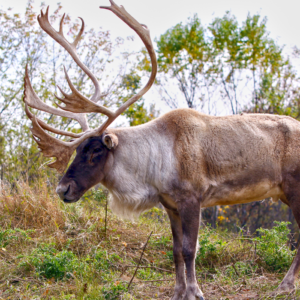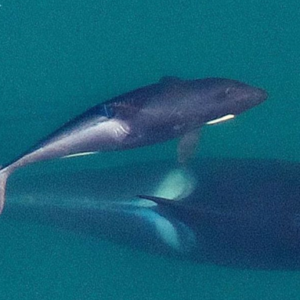Iconic Grizzly Bear Joins List of Species at Risk
Earlier this month, the Committee on the Status of Endangered Wildlife in Canada (COSEWIC) assessed 35 species as at risk during their spring meeting in Kananaskis, Alberta. There are now 650 species listed under various risk categories, and the Grizzly Bear – an iconic Canadian symbol of wilderness – is among them.
Loss and degradation of habitat stands as the most common threat for all species assessed this spring. Listed as a species of Special Concern, the western population of Grizzly bear continues to lose its habitat to ongoing and escalating natural resource extraction. Without listing every species on the list, here’s a snapshot of some that caught our attention.
[separator headline=”h2″ title=”Marbled Murrelet:”] Not surprisingly, this marine bird has been assessed as Threatened. It faces threats from proposed increased shipping traffic from projects like the Northern Gateway Pipeline. You can read more about the Murrelet’s sensitivity to boat traffic in an earlier post on marine birds. The Marbled Murrelet is also facing population declines due to habitat loss. The old growth forest along B.C.’s coast is prime nesting territory for this bird, which also happens to be the location of increased resource exploration. More than a 30 per cent decline in population is projected for over the next three generations. Amazingly it wasn’t until 1974, a full 185 years after this species was first described, that a Marbled Murrelet nest was first observed in an old growth forest.
[separator headline=”h2″ title=”Buff-breasted Sandpiper:”] This migratory shorebird is facing declines in populations because of habitat loss along its entire flyway. From its wintering grounds in South America to its breeding and nesting grounds in the Canadian arctic, its habitat is shrinking. Brought to the brink of extinction in the late 1800s from over hunting, human impacts continue to pose a threat to its survival. It is currently listed as a species of Special Concern.
For more information on the remaining three birds that were assessed this spring, check out Dick Canning’s blog post.
[separator headline=”h2″ title=”Leatherback Sea Turtle:”] Coastal and offshore resource development, marine pollution, poaching of eggs, changes to nesting beaches and climate change have all negatively impacted both the Atlantic and Pacific populations of this species. One of the biggest threats the Atlantic population continues to face is getting caught in the ropes and lines of fishing boats. Canadian waters are an important feeding area for the Atlantic population, which typically migrates here via the Gulf Stream current.
[separator headline=”h2″ title=”Freshwater fishes:”] Seven non-commercial fishes were assessed as at risk this year. Among them were four fishes from southwestern Ontario. The Northern Madtom, Blackstripe Topminnow, Pugnose Minnow and Silver Chub were listed because of loss or degradation of habitat.
The federal government’s 2012 budget does propose $50 million over two years to support the implementation of the Species at Risk Act, which is important for protecting our most vulnerable wildlife. However, other proposed changes will likely spell trouble for at-risk species. The near elimination of fish habitat protection in the Fisheries Act puts species from coast to coast at increased risk of habitat loss and population decline, while the replacement of the Canadian Environmental Assessment Act with a much weaker law will make it easier to rush headlong into damaging mega-projects like the Gateway pipeline.
The committee summarized the urgency of protecting habitat best:
“Once again, habitat loss emerged as the most common threat to Canadian wildlife, underscoring that all species, not just our own, need a healthy home in order to thrive.”




